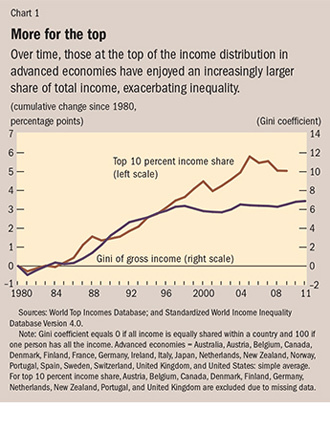Rich get richer from fewer labor unions, study says

A study by the International Monetary Fund tracked three decades of income and found that as unionization declined, the wealth of the richest 10 percent in advanced countries showed a continuous increase.
More specifically, the study’s authors found that when researching income levels during the period of 1980-2010, the decline in unionization explained about half of the rise in incomes for the richest 10 percent, and half of the increase in the Gini coefficient (a measure of income inequality).
READ MORE:British executive salaries surpass average worker's ‘over 160 times’
“While some inequality can increase efficiency by strengthening incentives to work and invest, recent research suggests that higher inequality is associated with lower and less sustainable growth in the medium run, even in advanced economies,” argued the paper’s authors, Florence Jaumotte and Carolina Osorio Buitron.

The authors said traditional research has argued that the rise of inequality in advanced economies can be attributed to skill-based technology changes – such as new technology displacing workers – and globalization. They found that these developments led to some inequality changes at different rates and magnitudes, but not enough to account for the consistent increase in inequality that was being measured.
READ MORE:US union protests intensify as thousands rally
Researchers looked for answers in recent studies that made the claim that financial deregulation and lower taxes were another factor – but again, that wasn’t showing the steady increases that researchers were charting.
“…A rising concentration of income at the top of the distribution can reduce a population’s welfare if it allows top earners to manipulate the economic political system in their favor,” they wrote, referring to things such as lower taxes and business subsidies.
Keeping women out of the workforce costs economies up to 30% of GDP, IMF chief says. http://t.co/cyW6RJMwF8pic.twitter.com/1ZOYfUOuze
— Wall Street Journal (@WSJ) February 24, 2015
They then considered what effect the decline in unionization and a flat-lining minimum wage could have on wealth disparity. Previous research said such things were unlikely to have a direct impact, but that is not what Jaumotte and Buitron found. They took samples of advanced economies between 1980 and 2010 and considered gross income, labor market institutions and controls for globalization, financial liberalization, and common global trends.
“Our results confirm that the decline in unionization is strongly associated with the rise of income shares at the top...about half the increase...in net income is driven by deunionization,” said Jaumotte and Buitron.

Economists argue that stronger unions and higher minimum wages increase unemployment, but there isn’t strong evidence to support the claim. The Organization for Economic Co-operation and Development only found three studies out of 17 that showed an association between unions and unemployment.
What it did find was that union rules lead to equal pay for workers, and that unionization didn’t maintain wages above “market-clearing” levels and cause unemployment. And unions, by mobilizing workers, encourage policymakers to engage in income redistribution and support for social and labor rights.
READ MORE:Wisconsin Republicans crush union rights
In the US, there were 14.5 million union members in 2013, or 11.3 percent of the working population, compared with 17.7 million in 1983. Union members in the private sector have fallen under seven percent, levels not seen since 1932. Internationally, Germany has 18.4 percent of its population in unions, Canada 27.5 percent, and Finland 70 percent.












